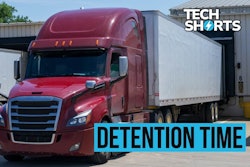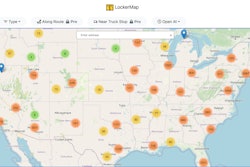Super Dispatch CEO Bek Abdullayev began working with car haulers about a dozen years ago when his cousin got his start in the business. His cousin hauled cars, while Abdullayev ran dispatch. Now, his cousin works with him as a principal product manager at Super Dispatch, a shipping platform backed by a digital suite of tools built for the auto transport industry.
“It's been great to have him – a guy that's been behind the wheel for two, three years to work with our customers and carriers and to have that level of empathy and understanding for what they're going through and how these tools can best help them,” Abdullayev said.
As he expanded beyond his cousin’s operation to help other carriers with their dispatch needs, he began to build relationships over the phone with drivers and eventually lived a couple of months on the road with different drivers as they picked up and delivered cars.
He said he found the auto transport industry fascinating, primarily because of how inefficiently it operated.
“I started feeling for the for the driver because not only do they have a hard job, they don't have a lot of tools,” Abdullayev said. “They were around stacks and stacks of carbon copy paper forms. They were having a hard time getting paid. Everything was over the phone. There was virtually zero technology helping them do their jobs, and that's where Super Dispatch came from.”
Over the years, Super Dispatch has transformed; it started by building tools to help make drivers’ jobs easier before creating services for dispatch operations, then for automating and streamlining bookkeeping and accounting, followed by services for shippers and brokers.
Now, Super Dispatch has launched its next generation marketplace, integrating its various technology solutions into a single, accessible system.
A more efficient ecosystem
The next generation marketplace, which has 8,000 verified carriers and over 650 verified shippers, collectively facilitating the movement of more than 4.1 million cars so far this year, aims to eliminate the hassle of disparate technologies.
It brings together Super Dispatch’s private load board, automated price negotiation, pricing data and recommendations, carrier and load suggestions, verified carrier network and its payment platform SuperPay.
Connecting disparate systems is key to creating a more efficient ecosystem, Abdullayev said.
Though the auto transport industry is a prominent economic driver in the U.S., Abdullayev said its profitability and growth are stunted by legacy practices, including the use of outdated tools and disconnected processes like manual tasks, disjointed technology and fragmented information systems.
“There has been a massive influx of new technologies in the last 10 years: tons of apps, tons of TMS systems, tons of load boards. The driver has to use 20 different apps to satisfy 20 different customers or go to multiple load boards to find loads,” he said. “It's painful, but my view is that it's painful in the short term; I actually think it's a good thing for the industry that there are a lot of technology players, because it's forcing technology companies to compete against each other and for the best ones to win out.
“In the short term, I think we're all collectively … going through a lot of pain trying to go through different platforms … but in the long run, it's great for the customer,” he added.
He said this is especially true for small carriers that are forced to use “top-down” platforms, and that’s the differentiating factor for Super Dispatch and what makes its solutions resonate more with car haulers.
“We took this bottoms-up approach of what's best for the driver and the carrier and their customer, versus the top-down approach of the big company wants you to do X, Y and Z, where in order to comply, you have to follow all these steps, even though they may not make sense to you,” Abdullayev said.
He said he thinks the industry is only two or three years away from the departure of many of these competing tech companies or the brokers that have built their own technology.
“We're beginning to see fewer and fewer players – more or less the survival of the fittest. We believe that two or three companies will end up surviving the next two, three years, and then once we've established the most relevant and robust companies to power the future of auto transport, I think we'll begin integrations to make it easier for everyone,” Abdullayev said. “I think we're close to the end of that cycle of natural self-selection of the best companies. While it's painful in the short term, in the long run, I think it's great for the driver, the carrier, broker and shipper because they're going to end up with best technology possible from this competitive phase.”














